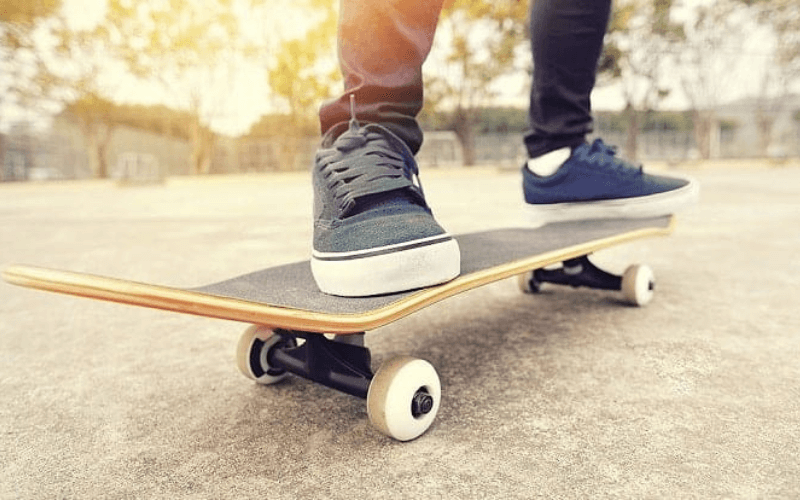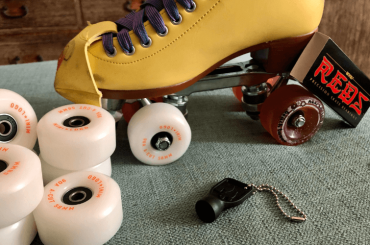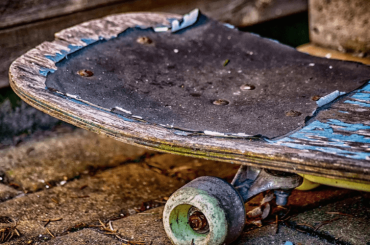As a skateboarder, you know that your board is an essential part of your equipment. When it comes to skateboarding one of the most important factors is the weight of your board. Most people don’t think about the weight of their skateboard until they have to carry it for a long distance.
The average skateboard weight is around 6 pounds. A heavier board can be harder to control and difficult to do tricks with. So, how much does a skateboard weigh? And what factors affect how much a skateboard weighs? Keep reading to find out!
What Factors Affect Skateboard Weight?
There are a few factors that affect how much a skateboard weighs:
- The first factor is the size of the board. A larger board will weigh more than a smaller board.
- The second factor is the type of wood used to make the deck. Different types of wood have different densities, which means that they weigh different amounts.
- The third factor is the hardware, which includes the trucks, wheels and bearings. Heavier hardware will make a skateboard weigh more.
- The fourth factor is the grip tape. Grip tape adds weight to a skateboard, but it’s usually not much.
How to Reduce the Weight of Your Skateboard?
There are a few things you can do to reduce the weight of your skateboard.
- One is to choose a lighter deck material. A maple is a popular option for skateboards because it is strong and lightweight.
- You can also look for decks that have been reinforced with carbon fiber or Kevlar, which are even lighter.
- Another way to reduce the weight of your skateboard is to choose lighter trucks and wheels. Again, maple is a good choice for both of these components because it is strong and lightweight.
- You can also look for trucks and wheels that have been reinforced with carbon fiber or Kevlar to reduce weight even further.
- Finally, you can try using lighter bearings. Ceramic bearings are often used in racing skateboards because they are very light and durable.
However, they may be more expensive than standard bearings. If you want to save money you can try using lower-quality bearings or removing the shields from your bearings to reduce the weight even further.
Experiment with different combinations of components to find the lightest setup that works for you. Every ounce counts when you are trying to reduce the weight of your skateboard!
Skateboard Weight Limit:
There is no official weight limit for skateboards but most manufacturers recommend that skateboards should support up to 250 pounds. If you’re heavier than that you might want to look into getting a custom-made skateboard.
Tips for Choosing a Lightweight Skateboard:
When choosing a skateboard, it is important to consider the weight of the board. A lightweight skateboard is easier to maneuver and can be more comfortable to ride. If you are a beginner, it is also important to choose a board that is not too heavy so that you can easily learn how to control it.
Here are some tips for choosing a lightweight skateboard:
- Check the weight rating of the skateboard. The weight rating is usually listed in pounds or ounces. A lightweight skateboard will typically have a weight rating of 6 pounds or less.
- Consider the type of deck material. Some materials such as aluminum, are lighter than others.
- Look for special features that make the skateboard lighter. Some skateboards have removable parts such as trucks that can make them lighter.
- Choose a size that is comfortable for you. A smaller skateboard may be easier to maneuver but may not provide as much stability.
- Ask your local skate shop for recommendations. The staff at your local skate shop can help you find the right skateboard for your skill level and weight.
These are a few things you can do to reduce the weight of your skateboard. Keep these tips in mind when you’re choosing a board and you’ll be able to find the perfect board for you!
Pros Of Lightweight Skateboard:
The following are the Pros of a lightweight skateboard:
- Easier to Control: A heavier board can be difficult to control and might not respond the way you want it to. A lighter board is easier to control and is more responsive. This will help you nail those tricks that you’ve been struggling with.
- Easier to Carry: If you have to carry your skateboard for a long distance, a lighter board will be easier on your arms and shoulders.
- Better for Street Skating: Street skating requires quick movements and snap decisions. A lighter board will be more agile and will help you make those quick movements.
Cons of Lightweight skateboard:
The following are the Cons of a lightweight skateboard:
- They are Less Durable: A lighter board is usually made of thinner materials, which means that it’s not as durable as a heavier board. You’ll have to be careful with a lighter board to avoid damaging it.
- They are More Expensive: Lighter boards are usually made of higher quality materials, which means that they are more expensive.
So, there are some pros and cons of having a lightweight skateboard. It’s up to you to decide if the pros outweigh the cons!
Wrap Up
A skateboard typically weighs about 4-7 pounds. This weight is perfect for children as it helps them to balance and steer the board easier. The average skateboard length is 28 inches, which makes it a good size for beginner riders.
Skateboarding is a great way for kids to get exercise and have fun. It’s important to choose the right size and type of skateboard for your child, so they can enjoy riding safely.





